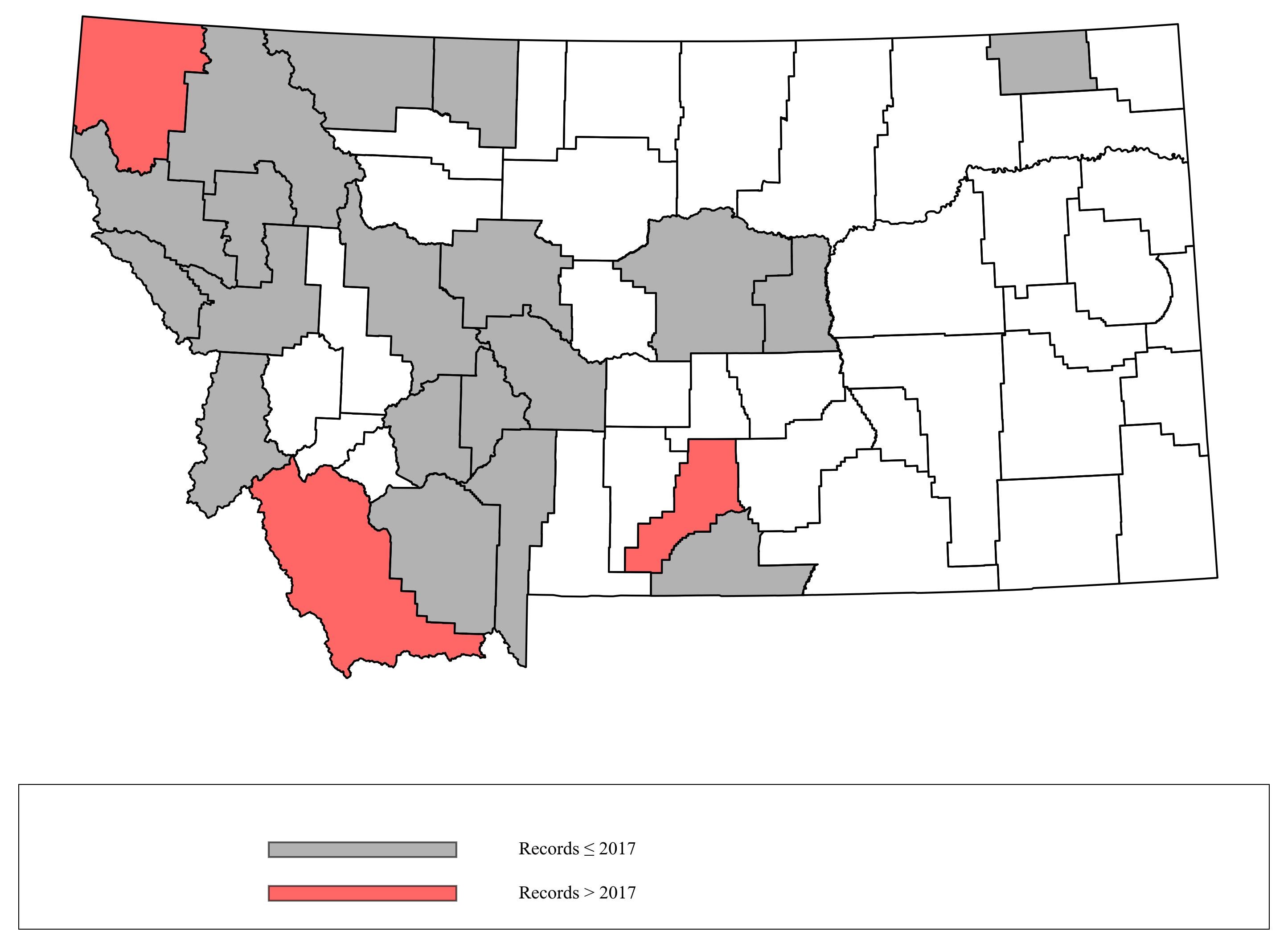Bumble Bees of Montana
Bombus (Psithyrus) suckleyi Greene, 1860 Suckley Cuckoo Bumble Bee
Bombus suckleyi is an uncommon social parasite known to breed in colonies of B. occidentalis, though it has also been observed in nests of B. terricola, B. rufocinctus, B. fervidus, B. nevadensis, and B. appositus (Williams et al. 2014). Its range extends from the Pacific Coast east to Nebraska and from New Mexico north to Alaska (Koch et al. 2012). It also has been recorded across the Canadian Prairie Provinces to the Atlantic Coast in northeastern Canada (Williams et al. 2014). Bombus suckleyi is one of only three species on the IUCN Red List recommended for “Critically Endangered” status (Hatfield et al. 2015d). In Montana, B. suckleyi seems to have a relatively patchy distribution across the state.
Montana Distribution: Records from Dolan et al. (2017) (gray) with correctionsand additional records added after publication (red).

Diagnosis
Like all species in the subgenus Psithyrus, B. suckleyi lacks pollen baskets on the hind tibiae. Characters used to identify this species include black hairs on both the face and the top of the head and very obvious ridges on abdominal S6.
Similar Species
This species is mostly easily confused with B. flavidus and B. insularis, the other two species within the subgenus Psithyrus known from Montana. However, the abdomen of B. flavidus is usually tightly curled under, it has black hairs at the bases of the antennae, yellow hairs on the top of the head, and the ridges on S6 are barely noticeable. Bombus insularis has yellow hairs on both the face and top of the head and the ridges on S6 are not as obvious as those of B. suckleyi.
